
Extractive summaries and key takeaways from the articles carefully curated from TOP TEN BUSINESS MAGAZINES to promote informed business decision-making | Since 2017 | Week 378, December 6-12, 2024 | Archive
Listen to this week’s edition
Shaping Section
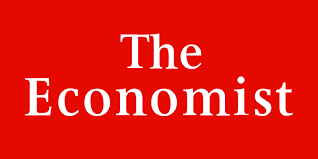
How China will strike back at Trump
The Economist | December 01, 2024
Extractive Summary of the Article | Listen
2 key takeaways from the article
- In the first phase of the trade war, China responded to tariffs by hitting American imports with similar penalties. The strategy was ineffective as America is less reliant on Chinese demand than the other way round. Some expect China to allow its currency to devalue against the dollar. Although doing so would make its goods cheaper, big drops in the yuan risk spurring capital flight. Instead, Chinese trade experts hope the government will focus on domestic policies to counteract American pressure.
- China’s ability to dodge attacks is limited. Officials have pushed tens of billions of dollars into the semiconductor industry in an attempt to make China self-sufficient. Although this has shown progress, especially in chipmaking machines, the country still does not make the most powerful chips, and sources less than 15% of its chips domestically. China is also reliant on the dollar-based financial system. Yuan transactions have risen in the past two years, but most still use SWIFT, a messaging network susceptible to American influence.
(Copyright lies with the publisher)
Topics: Trade War, USA, China, Regulations, Global Trade
Click for the extractive summary of the articleIn the face of hawkish appointment including Huohuade Lutenike, Marco Rubio, and Mike Waltz Chinese officials have kept quiet. But their formula for trade talks is starting to emerge. Xi Jinping, China’s leader, laid down “red lines” in a recent meeting with President Joe Biden. The gist was that Communist Party rule and China’s claim on Taiwan should not become bargaining chips. Then on December 1st Chinese tax rebates on aluminium and copper came to an end; ones for batteries and photovoltaic products fell from 13% to 9%. This is a big shift. Over the past year China has rejected claims it is exporting batteries and solar products at artificially low prices. As Martin Lynge Rasmussen of Exante Data, a research firm, notes, cuts to rebates are the first time officials seem to have sought to lessen the force of such accusations.
At the same time, Chinese officials want to increase trade with the rest of the world. The Ministry of Commerce has said that it will boost export credit and insurance, and support logistics services. The ministry wants to expand the number of countries that can get short-term business visas. And it has promised to help companies respond to “unreasonable foreign-trade restrictions” as they arise.
The Biden administration recently announced tariffs on solar panels from several South-East Asian countries, with the aim of stopping Chinese firms from re-routing exports through third countries. Mr Trump may expand these as firms look for loopholes. Many have, for example, set up factories in Indonesia and Laos, two countries that are not covered by the latest policies. To help small businesses sell goods overseas via e-commerce platforms, Chinese local governments have established service centres. Shanghai is setting up a “Silk Road e-commerce pilot zone” to boost trade with Central Asia.
Such tariff workarounds mean that America’s existing measures have not stopped China from increasing exports. Since the start of Mr Trump’s trade war in 2018, China’s trade surplus has more than doubled to $820bn (or 6% of GDP). Its surplus with America remains at $340bn, about the same as in 2018. If Mr Trump is willing to strike a deal, involving limited increases in tariffs, his measures might reduce annual Chinese GDP growth by just 0.4 percentage points between 2027 and 2029, according to Oxford Economics, a research firm. CF40 Research, a think-tank in Beijing, estimates that “moderate” tariffs of 10-20% would slow China’s year-on-year export growth to 1.5% next year, down from 2.2% if no tariffs were imposed. Mr Trump’s promised 60% tariff rise could shrink exports by 6.5% next year, which would have a devastating effect.
What about retaliation? In the first phase of the trade war, China responded to tariffs by hitting American imports with similar penalties. The strategy was ineffective as America is less reliant on Chinese demand than the other way round. Some expect China to allow its currency to devalue against the dollar. Although doing so would make its goods cheaper, big drops in the yuan risk spurring capital flight.
Instead, Chinese trade experts hope the government will focus on domestic policies to counteract American pressure. Lian Ping, an influential economist, has advised that it seeks to boost wages and consumer demand in order to steel itself against American economic attacks, which might be part of the plan. Ministers have promised stimulus to improve glum consumer sentiment. Bankers in Shanghai quip that they were cheering on a Trump victory in hope of extra government spending.
There is more to the president-elect’s China policy than tariffs. America and China are still in the midst of a tech war that was started by Mr Trump, amplified by Mr Biden and shows no sign of stopping. Chinese firms may also soon be hit with sanctions from the Office of Foreign Assets Control (OFAC), which, unlike the Department of Commerce’s entities list, restricts the ability to use dollars. The imposition of OFAC sanctions on a Chinese bank would lead to a freeze in dollar transactions with other banks, and probably to its collapse.
China’s ability to dodge attacks is limited. Officials have pushed tens of billions of dollars into the semiconductor industry in an attempt to make China self-sufficient. Although this has shown progress, especially in chipmaking machines, the country still does not make the most powerful chips, and sources less than 15% of its chips domestically. China is also reliant on the dollar-based financial system. Yuan transactions have risen in the past two years, but most still use SWIFT, a messaging network susceptible to American influence.
show less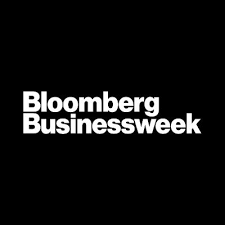
Dubai’s Alleged Crypto Scams Are Raking in Billions
By Alice Kantor | Bloomberg Businessweek | December 5, 2024
Extractive Summary of the Article | Listen
3 key takeaways from the article
- Over the past decade or so, experts say, Dubai has quietly become a leading home for a strain of crypto scamming that’s gone relatively unnoticed in the shadow of scandals at the level of FTX and Binance. These other companies allegedly sucker investors into handing them money for digital coins the companies can either easily manipulate or simply never create. They develop shiny-looking investment platforms, then promise mouthwatering returns that they finance with capital from newer marks right up until the scams collapse under their own weight, perhaps a few months later, prosecutors say.
- Employing old-school tactics and usually keeping low profiles, those behind these alleged Ponzi and pyramid schemes have taken in a large haul. Since 2017, five of them have defrauded victims of more than $3.4 billion in total.
- The vast majority of the accused have continued to operate their businesses without serious legal repercussions. Pyramid and Ponzi schemes are illegal in the UAE, as are all investment scams, but prosecutions are few and far between.
(Copyright lies with the publisher)
Topics: Crypto, Dubai, USA, Regulators
Click for the extractive summary of the articleOver the past decade or so, experts say, Dubai has quietly become a leading home for a strain of crypto scamming that’s gone relatively unnoticed in the shadow of scandals at the level of FTX and Binance. According to US and international authorities, this other wave of companies isn’t just misusing customer money, like Sam Bankman-Fried, or violating anti-money-laundering laws, like Changpeng Zhao. FTX and Binance were still running exchanges that mostly worked. These other companies allegedly sucker investors into handing them money for digital coins the companies can either easily manipulate or simply never create. They develop shiny-looking investment platforms, then promise mouthwatering returns that they finance with capital from newer marks right up until the scams collapse under their own weight, perhaps a few months later, prosecutors say. On top of that, these platforms often grow exponentially by promising higher returns to those who can also bring in new investors—usually their friends and family.
Employing old-school tactics and usually keeping low profiles, those behind these alleged Ponzi and pyramid schemes have taken in a large haul. Since 2017, five of them have defrauded victims of more than $3.4 billion in total, according to US charges, which rank Lee’s ( an Australian investor who as the co-founder of a company called HyperVerse orchestrated a cryptocurrency scam that bilked investors around the world for almost $2 billion – US authorities announced that they’d charged Lee in absentia ) operation at the top of that list. Dozens of other people whom US and international authorities have accused of operating similar schemes are also based in Dubai, according to public records and communications with some of those involved. The vast majority of the accused have continued to operate their businesses without serious legal repercussions. Pyramid and Ponzi schemes are illegal in the UAE, as are all investment scams, but prosecutions are few and far between, says David Utzke, a former crypto investigator for the US Internal Revenue Service. “There’s a sense in the UAE that criminals are allowed to come in and do whatever, as long as they’re not harming local citizens.”
The schemes are proliferating at a delicate moment for the UAE’s standing in the world of finance. In 2022 the nation was placed on the international Financial Action Task Force’s “gray list” of jurisdictions that don’t do enough to tackle illicit funds. It took steps to get itself removed from the list and has continued polishing its image since it succeeded this past February. But it’s kept its crypto rules loose, even as other countries tighten theirs, in a sustained bid to become the industry’s global capital. Now, according to international authorities and supported by public records, it appears to be home to a crypto scammer colony.
The US Federal Trade Commission received about 200 complaints against HyperVerse or some version of it between 2021 and early 2024. People from the US and dozens of other countries reported that the company had cost them as much as $200,000 apiece. “Now that it’s time for me to get my money out of there, they put it in ‘pending’ and won’t let me have it back,” wrote an investor from Palmdale, California. In the English city of Reading, therapist Diksha Chakravarti invested £14,000 of her nest egg, impressed by video presentations that showed the Burj Khalifa in the background. She lost all of her stake, and so did the friends and relatives who heard her talk up the investment. She’s since made back some of her money through a wealth recovery company that negotiated reimbursement with her bank. “I never had aspirations to be a millionaire, but I wanted to have something for retirement,” says Chakravarti, who’s 67. “I would have liked to have retired by now.”
In some cases, Dubai’s justice system can be punishing. In 2016 a phony foreign exchange company called Exential Group was revealed to have conned thousands of Emiratis out of hundreds of millions of dollars. The company was shut down by Dubai authorities, and a Dubai court sentenced the company’s two Indian operators to 513 years in prison and imposed the same sentence in absentia on one of their wives. More broadly, however, the country has yet to legislate explicitly on crypto crime.
The UAE has responded, in its way, to international pressure. In 2022, after the country was placed on the international gray list, the government said it would prosecute more cases tied to illicit finance and increase cooperation with international law enforcement agencies. Dubai, for its part, created a crypto regulator called the Virtual Assets Regulatory Authority. So far, the largest fine the agency has issued, against the crypto exchange OPNX for operating without the proper license, is $2.7 million. This spring, while Binance Holdings Ltd. was reeling from a $4 billion settlement with US authorities over allegations of money laundering and sanctions violations, some countries took steps to stop it from operating locally, but VARA issued the company a fresh license.
show less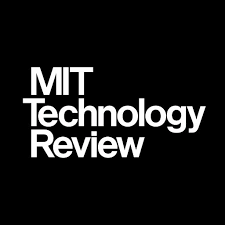
How the Ukraine-Russia war is reshaping the tech sector in Eastern Europe
By Peter Guest | MIT Technology Review | December 4, 2024
Extractive Summary of the Article | Listen
3 key takeaways from the article
- Latvian startup Global Wolf Motors launched Mosphera scooter in 2020 with a hope that it would fill a niche in micromobility. When co-founders Henrijs Bukavs and Klavs Asmanis first went to talk to Latvia’s armed forces, they were indeed met with skepticism—a military scooter, officials implied, didn’t make much sense—and a wall of bureaucracy. Then Russia launched its full-scale invasion of Ukraine in February 2022, and everything changed. In the desperate early days of the war, Ukrainian combat units wanted any equipment they could get their hands on, and they were willing to try out ideas—like a military scooter—that might not have made the cut in peacetime.
- Within weeks, the scooters were at the front line—and even behind it, being used by Ukrainian special forces scouts on daring reconnaissance missions. It was an unexpected but momentous step for Global Wolf, and an early indicator of a new demand that’s sweeping across tech companies along Ukraine’s borders: for civilian products that can be adapted quickly for military use.
- Their successes—often at a fraction of the cost of conventional weapons systems—have in turn awakened European governments and militaries to the potential of startup-style innovation and startups to the potential dual uses of their products.
(Copyright lies with the publisher)
Topics: War, Technology, Startups, Ukraine, Russia, Latvia
Click for the extractive summary of the articleLatvian startup Global Wolf Motors launched Mosphera scooter in 2020 with a hope that it would fill a niche in micromobility. Like commuters who use scooters in urban environments, farmers and vintners could use the Mosphera to zip around their properties; miners and utility workers could use it for maintenance and security patrols; police and border guards could drive them on forest paths. And, they thought, maybe the military might want a few to traverse its bases or even the battlefield—though they knew that was something of a long shot.
When co-founders Henrijs Bukavs and Klavs Asmanis first went to talk to Latvia’s armed forces, they were indeed met with skepticism—a military scooter, officials implied, didn’t make much sense—and a wall of bureaucracy. They found that no matter how good your pitch or how glossy your promo video (and Global Wolf’s promo is glossy: a slick montage of scooters jumping, climbing, and speeding in formation through woodlands and deserts), getting into military supply chains meant navigating layer upon layer of officialdom.
Then Russia launched its full-scale invasion of Ukraine in February 2022, and everything changed. In the desperate early days of the war, Ukrainian combat units wanted any equipment they could get their hands on, and they were willing to try out ideas—like a military scooter—that might not have made the cut in peacetime. Asmanis knew a Latvian journalist heading to Ukraine; through the reporter’s contacts, the startup arranged to ship two Mospheras to the Ukrainian army.
Within weeks, the scooters were at the front line—and even behind it, being used by Ukrainian special forces scouts on daring reconnaissance missions. It was an unexpected but momentous step for Global Wolf, and an early indicator of a new demand that’s sweeping across tech companies along Ukraine’s borders: for civilian products that can be adapted quickly for military use.
Global Wolf’s high-definition marketing materials turned out to be nowhere near as effective as a few minutes of grainy phone footage from the war. The company has since shipped out nine more scooters to the Ukrainian army, which has asked for another 68. Where Latvian officials once scoffed, the country’s prime minister went to see Mosphera’s factory in April 2024, and now dignitaries and defense officials from the country are regular visitors.
It might have been hard a few years ago to imagine soldiers heading to battle on oversized toys made by a tech startup with no military heritage. But Ukraine’s resistance to Russia’s attacks has been a miracle of social resilience and innovation—and the way the country has mobilized is serving both a warning and an inspiration to its neighbors. They’ve watched as startups, major industrial players, and political leaders in Ukraine have worked en masse to turn civilian technology into weapons and civil defense systems. They’ve seen Ukrainian entrepreneurs help bootstrap a military-industrial complex that is retrofitting civilian drones into artillery spotters and bombers, while software engineers become cyberwarriors and AI companies shift to battlefield intelligence. Engineers work directly with friends and family on the front line, iterating their products with incredible speed.
Their successes—often at a fraction of the cost of conventional weapons systems—have in turn awakened European governments and militaries to the potential of startup-style innovation and startups to the potential dual uses of their products, meaning ones that have legitimate civilian applications but can be modified at scale to turn them into weapons.
show lessStrategy & Business Model Section

Power forward: Five make-or-break truths about next-gen e-commerce
By Arun Arora | McKinsey & Company | October 8, 2024
Extractive Summary of the Article | Listen
3 key takeaways from the article
- E-commerce is undergoing a fundamental change that is reshaping how customers buy and companies sell. While generative AI (gen AI) has grabbed the attention of executives over the past year, a quieter wave of technology-driven innovation is washing over almost every aspect of e-commerce.
- This technology infusion is powering a much more comprehensive and integrated version of next-gen e-commerce, in which a broad ecosystem of capabilities—such as R&D, logistics, warehousing, and marketing and sales—are increasingly interconnected. With these deeper and broader integrations comes the promise of better performance leading to greater productivity, higher profitability, and better customer experiences.
- A study of 500 executives in B2C and B2B companies across more than seven sectors in Brazil, China, Germany, the United Kingdom, and the United States shines a bright light on five truths about next-gen e-commerce that are the cornerstones of success: invest like an attacker, You can’t outsource your way to victory, Technology is strategy, You can’t know your customers if you don’t know AI, and Lead from the center but empower teams.
(Copyright lies with the publisher)
Topics: Strategy, E-Business Model, E-commerce, Technology, Artificial Intelligence
Click for the extractive summary of the articleE-commerce is undergoing a fundamental change that is reshaping how customers buy and companies sell. While generative AI (gen AI) has grabbed the attention of executives over the past year, a quieter wave of technology-driven innovation is washing over almost every aspect of e-commerce.
This technology infusion is powering a much more comprehensive and integrated version of next-gen e-commerce, in which a broad ecosystem of capabilities—such as R&D, logistics, warehousing, and marketing and sales—are increasingly interconnected. With these deeper and broader integrations comes the promise of better performance leading to greater productivity, higher profitability, and better customer experiences.
To better understand how this more dynamic and tech-driven story is evolving—specifically, how companies are evolving their e-commerce strategies and which moves are making a difference— the authors surveyed 500 executives in B2C and B2B companies across more than seven sectors in Brazil, China, Germany, the United Kingdom, and the United States. Their analysis focused on the actions of leaders—those who reported that their businesses are growing at more than 10 percent above the sector average—to learn where they are distinguishing themselves from also-rans. The analysis shines a bright light on five truths about next-gen e-commerce that are the cornerstones of success:
- Invest like an attacker. Leaders act like attackers, investing in particular in new technologies—such as gen AI—and new channels to better understand and serve their customers. Leaders outstripping their peers in three areas in particular: technology and gen AI, Digital channels, and Shopping events.
- You can’t outsource your way to victory. Leaders are not dependent on vendors for technology needs; instead, they build up their in-house talent to innovate at pace.
- Technology is strategy. Solid tech foundations give leaders the speed and flexibility to innovate.
- You can’t know your customers if you don’t know AI. Leaders are turning to AI to get an edge with complex shopping journeys and evolving standards.
- Lead from the center but empower teams. A centralized operating model provides the necessary scale but is only effective if it enables autonomous e-commerce teams.

A Two-Minute Masterclass From Jeff Bezos – Five Powerful Insights
By Roger Dooley | Forbes | December 9, 2024
Extractive Summary of the Article | Listen
3 key takeaways from the article
- Jeff Bezos, the founder of Amazon, shared a powerful story about the firm’s early days that offers timeless lessons for leaders. Bezos appeared on the Lex Fridman podcast and, in the course of their conversation, described a meeting about hold times for customers contacting Amazon’s help line. The call center data showed customers waiting less than 60 seconds for phone support, yet complaints about excessive wait times persisted.
- It would have been easy to dismiss the complaints as outliers or the product of a small number of cranks. Instead, during that meeting, Bezos decided to test it himself. He picked up the phone, dialed Amazon’s customer service number, and waited – for over 10 minutes! This simple act dramatically exposed the flawed data and sparked a chain of events to correct it.
- This segment of the podcast ran just over two minutes, but in that short time Bezos delivered massive wisdom. These are: Anecdotal Evidence is Important, Question the Metrics, Truth-Telling and Action, Demonstrations Are Powerful, and Focus on the Customer.
(Copyright lies with the publisher)
Topics: Customer Service, Marketing, Sales, Decision-making, Strategy, Business Model
Click for the extractive summary of the articleJeff Bezos, the founder of Amazon, shared a powerful story about the firm’s early days that offers timeless lessons for leaders. Bezos appeared on the Lex Fridman podcast and, in the course of their conversation, described a meeting about hold times for customers contacting Amazon’s help line. The call center data showed customers waiting less than 60 seconds for phone support, yet complaints about excessive wait times persisted.
It would have been easy to dismiss the complaints as outliers or the product of a small number of cranks. Instead, during that meeting, Bezos decided to test it himself. He picked up the phone, dialed Amazon’s customer service number, and waited – for over 10 minutes! This simple act dramatically exposed the flawed data and sparked a chain of events to correct it.
This segment of the podcast ran just over two minutes, but in that short time Bezos delivered massive wisdom.
- Anecdotal Evidence is Important. There is perhaps no more data-driven company than Amazon. But, Bezos’s story highlights that while data is crucial for decision-making, anecdotal evidence should not be dismissed. Customer anecdotes, complaints, and feedback can offer valuable insights into the customer experience that might not be captured by metrics. Bezos emphasizes, “When the data and the anecdotes disagree, the anecdotes are usually right.”
- Question the Metrics. When anecdotal evidence contradicts the data, it signals a need to examine the metrics being used. Bezos suggests that in such cases, “It’s usually that you’re not measuring the right thing.” Businesses should constantly evaluate whether their metrics accurately reflect the aspects of the business they intend to measure, particularly customer satisfaction and experience.
- Truth-Telling and Action. Bezos’s decision to publicly call customer service during a meeting demonstrates his commitment to “truth-telling.” He emphasizes the need to acknowledge uncomfortable truths and take action to address them. This suggests that leaders should foster a culture where employees feel comfortable raising concerns and challenging the status quo, even when it involves admitting mistakes or shortcomings.
- Demonstrations Are Powerful. By personally experiencing and demonstrating the long customer service wait time, Bezos effectively conveyed the urgency of the issue to his team. Real-world demonstrations can make a point and galvanize action. Leaders can often make a bigger impact by showing rather than simply telling.
- Focus on the Customer. The anecdote reinforces Bezos’s customer-centric approach. He prioritizes customer experience over potentially misleading data. Businesses must prioritize understanding and addressing customer pain points, even when it means challenging internal assumptions or metrics.
Personal Development, Leading & Managing Section
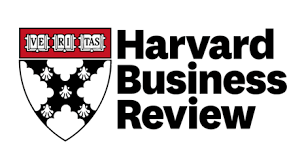
Retire Without Regrets
By Teresa M. Amabile et al., | Harvard Business Review Magazine | November–December 2024 Issue
Extractive Summary of the Article | Listen
3 key takeaways from the article
- For anyone who has established a meaningful professional identity over a decades-long career, retirement represents a huge—and potentially wrenching—transition. While some people navigate it well, many struggle.
- Retirement is a transition that involves several key phases: making the decision to stop working; detaching from work; experimenting with new relationships, activities, and social groups; and establishing a new, reasonably stable life structure.
- Satisfied retirees demonstrate four key behaviors throughout the phases: alignment between what psychologists refer to as “the self” and “the life structure”; awareness of the interplay between the two; agency in making changes in the self or life structure or both; and adaptability in the face of events or circumstances out of their control. We call these behaviors “the four A’s.” It takes work to stop working. Leaving a career and crafting a fulfilling retirement takes thought, time, and effort. The process can be enjoyable, but it cannot be avoided.
(Copyright lies with the publisher)
Topics: Career, Retirement, Productivity, Engaged Life, Adaptability
Click for the extractive summary of the articleFor anyone who has established a meaningful professional identity over a decades-long career, retirement represents a huge—and potentially wrenching—transition. While some people navigate it well, many struggle.
To better understand the factors that affect people’s experience in retirement, the authors conducted a 10-year longitudinal study of 14 Americans going through the transition. They also interviewed 106 pre- and postretirement knowledge workers from three U.S. industries and geographies. They uncovered positive tales and cautionary ones. One clear lesson emerged: It takes work to stop working. Leaving a career and crafting a fulfilling retirement takes thought, time, and effort. The process can be enjoyable, but it cannot be avoided.
Retirement is a transition that involves several key phases: making the decision to stop working; detaching from work; experimenting with new relationships, activities, and social groups; and establishing a new, reasonably stable life structure. In their research, the authors found that satisfied retirees demonstrate four key behaviors throughout the phases:
- Alignment. Your self consists of the key aspects of who you are at any given point in your life: your central identities, needs, values, preferences, motivations, personality dispositions, and even health. Your life structure consists of the contexts that are important to you: your main activities and relationships, the groups and organizations you belong to, and the places you spend your time. Alignment is the degree of fit between the two—specifically, how suitable your life structure is for your current sense of self and how viable it is for the foreseeable future. There’s an ongoing interplay between self and life structure throughout the retirement transition.
- Awareness. To properly assess alignment, you need a clear-eyed view of both your self and your life structure. Honest, accurate self-reflection and evaluation of your life are always difficult but can be especially tough during periods of transition because of the inevitable stress and ambiguity. It can be helpful to enlist support from a psychotherapist, family member, or trusted friend.
- Agency. If you sense misalignment between your current (or ideal) self and current (or ideal) life structure, it’s important to exercise agency to improve the situation. To get started, ask yourself two main questions: “What minor tweaks—or major changes—can I make in my life structure to bring it into better alignment with the self I am now?” and “Is there anything I want to change about my current self to improve alignment?” Start small to avoid feeling overwhelmed. Ask yourself, “What incremental steps might I take to bring about some desired changes? Who or what could help me take them?”
- Adaptability. Even if you’ve taken all the right steps to achieve alignment, life happens. We all face health crises, births or deaths in the family, or even external events, such as a global pandemic. When such situations crop up or your circumstances change throughout your retirement life, you’ll need to accept, adjust, and adapt.
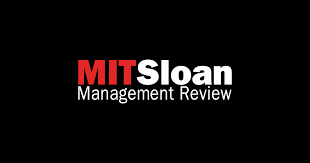
A Better Way to Avoid Project Delays
By Matej Lorko et al., | MIT Sloan Management Review | November 27, 2024
Extractive Summary of the Article | Listen
3 key takeaways from the article
- Why do so many managers underestimate the time it will take to complete a significant project? Almost half of business projects fall behind schedule, and up to a third are not completed at all..
- Late projects trigger cost overruns, reduce quality, and upset clients. While some projects fail due to poor execution or changes in scope, a frequent culprit is an unrealistic time frame that dooms the project before it even starts. Unrealistic schedules may be introduced by a variety of unintentional anchors, including initial wild guesses (“Maybe we could get it done in two months?”), suggestions (“Can you complete the task in three weeks?”), customer expectations (“We’re planning to launch the product right after the new year”), and tentative deadlines (“The CEO asked for the project to be completed by the end of next month”).
- If project planners and managers are more aware of the strong effect that anchors have when estimating timelines and budgets, they can avoid being led astray by uninformed anchors and use helpful anchors to set more realistic expectations.
(Copyright lies with the publisher)
Topics: Project Management, Efficiency
Click for the extractive summary of the articleWhy do so many managers underestimate the time it will take to complete a significant project? Almost half of business projects fall behind schedule, and up to a third are not completed at all, according to a 2021 report by the Project Management Institute. The Berlin Brandenburg Airport took 14 years to construct instead of the estimated five, and its cost ballooned from a 2009 budget of 2.83 billion euros to over 6 billion euros by the time it was completed. And after the V.C. Summer nuclear plant expansion project in South Carolina was abandoned in 2017, two executives involved in what became known as the “Nukegate” scandal pleaded guilty to fraud charges stemming from their efforts to conceal delays.
Late projects trigger cost overruns, reduce quality, and upset clients. While some projects fail due to poor execution or changes in scope, a frequent culprit is an unrealistic time frame that dooms the project before it even starts. Nonetheless, planners often set project schedules that are too short — partly because of uncertainty and ambiguity around the full scope of work required but also due to the expectations and enthusiasm of project sponsors.
Excitement about a new project can spur optimism, which may bias even experienced executives to underestimate the time needed to execute the work. However, if members of a project team consider a CEO’s optimistic estimated time to complete to be plausible, that is extremely likely to influence their judgment and be reflected in their own estimates. This is an example of anchoring, a cognitive bias that causes us to give more weight to the first piece of information we get on a given topic.
Unrealistic schedules may be introduced by a variety of unintentional anchors, including initial wild guesses (“Maybe we could get it done in two months?”), suggestions (“Can you complete the task in three weeks?”), customer expectations (“We’re planning to launch the product right after the new year”), and tentative deadlines (“The CEO asked for the project to be completed by the end of next month”).
In a study, people who were exposed to the high anchor repeatedly estimated that it would take them longer to complete the task, whereas the low anchor led to shorter time estimates. The participants were not told how long they took to complete the task, and the bias persisted on multiple rounds of estimating and executing the task. Importantly, the actual average task duration did not differ between groups.
Given the power of anchors to influence estimates, can project managers strategically use them to avoid overly optimistic schedules and induce people to create more accurate timelines? Project managers often hope to achieve schedule accuracy by collecting excessively detailed descriptions of project deliverables. While more information does result in more realistic schedules, the gains are often marginal and project plans remain too optimistic. Project planners intuitively focus on available specifications, usually not realizing that even the most comprehensive descriptions are necessarily incomplete. In addition, excessive details may lead to more confusion. The authors’ experiment showed that anchoring planners on reference-class information can improve schedule accuracy and on-time project completion. This is a simpler and more effective approach than giving planners as much information as possible about a project.
In another research the authors found that incentives also play an important role in project estimation and delivery. We tested whether focusing exclusively on timely project delivery induces inflated estimates and slower project execution.
show lessEntrepreneurship Section

10 Traits of Successful Entrepreneurs That Investors Love (Even If They Seem Like Jerks)
By Dima Maslennikov | Edited by Chelsea Brown | Entrepreneur Magazine | December 9, 2024
Extractive Summary of the Article | Listen
3 key takeaways from the article
- After reading the biographies of Elon Musk, Steve Jobs and many other successful entrepreneurs, the author noticed a recurring theme: Many of them weren’t what we’d call “pleasant” people in the conventional sense. Perhaps their success reframes our perception of their behavior, but it raises a thought-provoking question: Do you need to be a jerk to succeed as an entrepreneur, or is it just a side effect of the intense demands of building something extraordinary? The truth isn’t black and white.
- Ten such traits that may brand an entrepreneur as either a jerk or a visionary leader, depending on perspective are: unbounded pragmatism, Arrogance, Strategic selfishness, Assertiveness bordering on rudeness, Risk-taking without overthinking, The art of charm, Hyperactivity, Low empathy, Contradictory nature, Selective forgetfulness, and Resourcefulness above all i.e., they deconstruct obstacles, improvise solutions and tap into their networks to find a way forward.
- Investors, whose livelihoods depend on betting on the right founders, often recognize these traits as essential indicators of resilience and determination.
(Copyright lies with the publisher)
Topics: Startups, Entrepreneurs, Entrepreneurship, Pragmatism, Empathy
Click for the extractive summary of the articleThe author Dima, is the founder of PitchBob.io, an AI co-pilot for entrepreneurs. They are developing a product that will positively impact entrepreneurs’ success. This drives him to constantly study the factors that can increase the likelihood of entrepreneurial success. Most investors emphasize the primary importance of the team and the founder yet rarely specify which qualities they deem essential.
He became intrigued by the idea of analyzing this factor in investment decision-making and comparing the traits of globally renowned successful entrepreneurs with those of people in everyday life who have not yet achieved significant success. This exploration aims to uncover patterns in character and behavior that might distinguish proven success from untapped potential.
After reading the biographies of Elon Musk, Steve Jobs and many other successful entrepreneurs, he noticed a recurring theme: Many of them weren’t what we’d call “pleasant” people in the conventional sense. Perhaps their success reframes our perception of their behavior, but it raises a thought-provoking question: Do you need to be a jerk to succeed as an entrepreneur, or is it just a side effect of the intense demands of building something extraordinary?
The truth isn’t black and white. Many approachable, genuinely kind people achieve entrepreneurial success, yet a pattern of distinct — and sometimes abrasive — traits is undeniable among high achievers. Investors, whose livelihoods depend on betting on the right founders, often recognize these traits as essential indicators of resilience and determination.
Here are ten such traits that may brand an entrepreneur as either a jerk or a visionary leader, depending on perspective. Whether you choose to embrace, avoid or adapt them is entirely up to you.
- Unbounded pragmatism. Startup founders thrive where others see limitations. They navigate bureaucracy, uncover loopholes and adapt to challenging circumstances. Their ability to creatively solve problems without breaking ethical boundaries allows them to succeed where others falter. Why investors love it: Pragmatism signals resourcefulness and the ability to adapt, both critical in overcoming the inevitable roadblocks of entrepreneurship.
- Arrogance. Entrepreneurs must believe their ideas can change the world. While arrogance can alienate people, it also fuels the confidence needed to push forward when no one else believes in their vision. Why investors love it: Confidence — bordering on arrogance — convinces others to believe in the founder’s vision, attracting customers, partners and investors.
- Strategic selfishness. Entrepreneurs prioritize their goals over everything else, sacrificing weekends, personal time and sometimes even relationships. This focus ensures that nothing distracts them from building their vision. Why investors love it: Dedication to the mission reassures investors that the founder is fully committed, reducing the risk of abandonment.
- Assertiveness bordering on rudeness. Entrepreneurs know how to push boundaries and demand what they need. Their ability to navigate tough negotiations and secure resources sets them apart, even if it occasionally comes off as impolite. Why investors love it: Assertiveness leads to results. Investors value founders who can secure deals and fight for their startups in competitive environments.
- Risk-taking without overthinking. Charging ahead without overanalyzing risks can lead to breakthroughs. Entrepreneurs who take decisive action often uncover opportunities others overlook. Why investors love it: Risk-takers are more likely to achieve extraordinary outcomes. Balanced with a willingness to pivot, this trait can be invaluable.
- The art of charm. Entrepreneurs master the art of persuasion. Whether convincing an investor, inspiring a team or closing a partnership, charm is a strategic tool they wield effectively. Why investors love it: A charismatic entrepreneur can rally stakeholders and secure their startup’s resources to thrive.
- Hyperactivity. Entrepreneurs constantly switch between ideas and tasks, pursuing opportunities at lightning speed. While many ventures may fail, their energy ensures that at least one will stick. Why investors love it: Hyperactivity reflects a relentless drive to experiment and find what works, a critical trait in the iterative world of startups.
- Low empathy. Entrepreneurs often lack time to dwell on others’ emotions. Their focus on achieving their goals can come across as cold, but it enables them to make tough decisions without hesitation. Why investors love it: This focus ensures that founders prioritize results over distractions, making them more effective leaders.
- Contradictory nature. Successful entrepreneurs adapt constantly, sometimes contradicting their earlier decisions. They view this as flexibility, allowing them to pivot as circumstances evolve. Why investors love it: The ability to adapt quickly to changing market conditions increases a startup’s chances of survival.
- Selective forgetfulness. Entrepreneurs have an uncanny ability to “forget” past failures, enabling them to press forward with optimism. This resilience keeps them motivated and inspires confidence in others. Why investors love it: Selective amnesia allows founders to focus on the future and learn from failure without dwelling on it.
Resourcefulness above all. Entrepreneurs don’t take “no” for an answer. When faced with closed doors, they deconstruct obstacles, improvise solutions and tap into their networks to find a way forward. This resourcefulness defines their approach to challenges.
show less
He Sold His Startup to Walmart for $3.3 Billion. Here’s His 3-Part Plan for Founder Success
By NIick Hawkins | Inc Magazine | December 5, 2024
Extractive Summary of the Article | Listen
2 key takeaways from the article
- In the past 25 years, serial entrepreneur Marc Lore has built and sold four successful businesses. You might say Lore knows a thing or two about building and selling businesses. More recently, he founded the restaurant-kitchen and delivery concept Wonder.
- Before Wonder, Lore built and sold Diapers.com to Amazon in 2011 for $550 million and then built and sold e-commerce powerhouse Jet.com to Walmart in 2016 for $3.3 billion. Along the way, Lore says, he realized the most important things a founder can focus on are vision, capital, and people.
(Copyright lies with the publisher)
Topics: Startup, Entrepreneurship, Vision, Strategy, Competitive Advantage, Leadership
Click for the extractive summary of the articleIn the past 25 years, serial entrepreneur Marc Lore has built and sold four successful businesses. You might say Lore knows a thing or two about building and selling businesses. More recently, he founded the restaurant-kitchen and delivery concept Wonder.
Before Wonder, Lore built and sold Diapers.com to Amazon in 2011 for $550 million and then built and sold e-commerce powerhouse Jet.com to Walmart in 2016 for $3.3 billion. Along the way, Lore says, he realized the most important things a founder can focus on are vision, capital, and people.
Vision. Your vision is your 10- to 15-year plan of what you want your business to become, says Lore. But it isn’t just a picture of wealth and success. Your vision should include the strategy of how you expect to get there, he says, and what your competitive advantage is. This will inform how you attack whatever problem you’re solving in a way that no one else is. Then it can help you structure your organization to support that strategy.
People. Lore prioritizes hiring a head of human resources or chief people officer early in a startup’s life. A decision-maker in this role can help shape the business culture around performance management, compensation, and recruiting, he says. Lore explains that it’s hard to recruit some of the best people in the world to come work at an early-stage startup. A chief people officer, if they’re really good, can help make the difference.
Capital. Once you’ve got a vision and a plan to get your business there, you’ll need to start thinking about how much capital you’ll need to execute that vision. This is where your vision, your strategy to achieve that vision, and competitive advantage can help you craft a compelling pitch to investors. Lore says the last thing you want is to feel the stress of needing to raise money. “It’s like survival,” he says, “like being chased by an animal that was going to devour you.” But, “if you’ve got a clear vision, you’ve got capital, and you have the best people in the world in the right spots with the right level of motivation,” says Lore, “you could accomplish anything.”
show less